Globe thistle, with it's spiked spherical blue or violet flower heads, is a great addition to any garden. It's botanical name, Echinops ritro, is a testament to the plant's spiky appearance and rustic charm. Learn how to grow Globe thistle, and add this unique thistle-like flower to your garden.
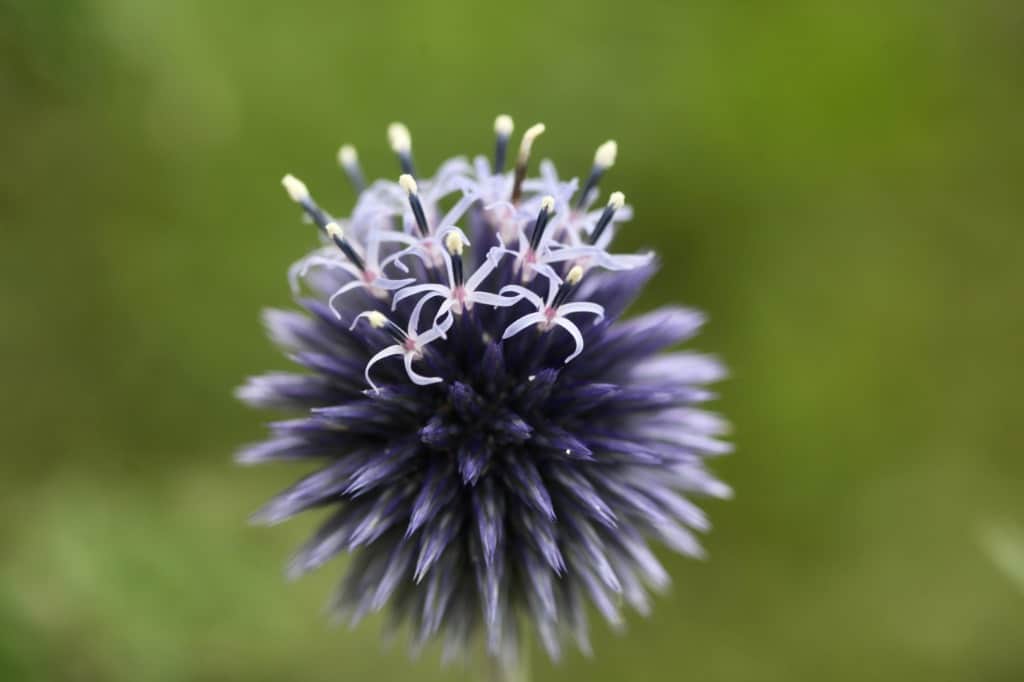
Globe thistle is very easy to grow for even a beginner gardener, and makes a striking statement in the garden. The plant is a herbaceous perennial, and is easily grown from seed or division. When started from seed it will take several years for the plant to bloom. You will be in for a fun surprise when the flower heads begin to bloom, giving the plant an other-worldly appearance.
Flourishing in full sunlight, Globe thistle thrives on minimal care, making it an excellent choice for gardeners looking to add a low-maintenance, yet visually appealing specimen to their landscape. The plants are known for being drought tolerant once established, and their resilient nature makes them a solid option for a variety of different growing conditions.
The beautiful spiked blooms are not just a feast for the eyes, but also a magnet for pollinators such as bees and butterflies, enriching the biodiversity of your garden space.
In this guide, we'll cover the essentials of successfully cultivating Globe thistle. From optimal planting conditions to care and maintenance, we aim to provide you with straightforward, actionable advice. Let's explore how to integrate Globe thistle into your garden and ensure its growth and blooming, enhancing your garden's beauty and supporting biodiversity.
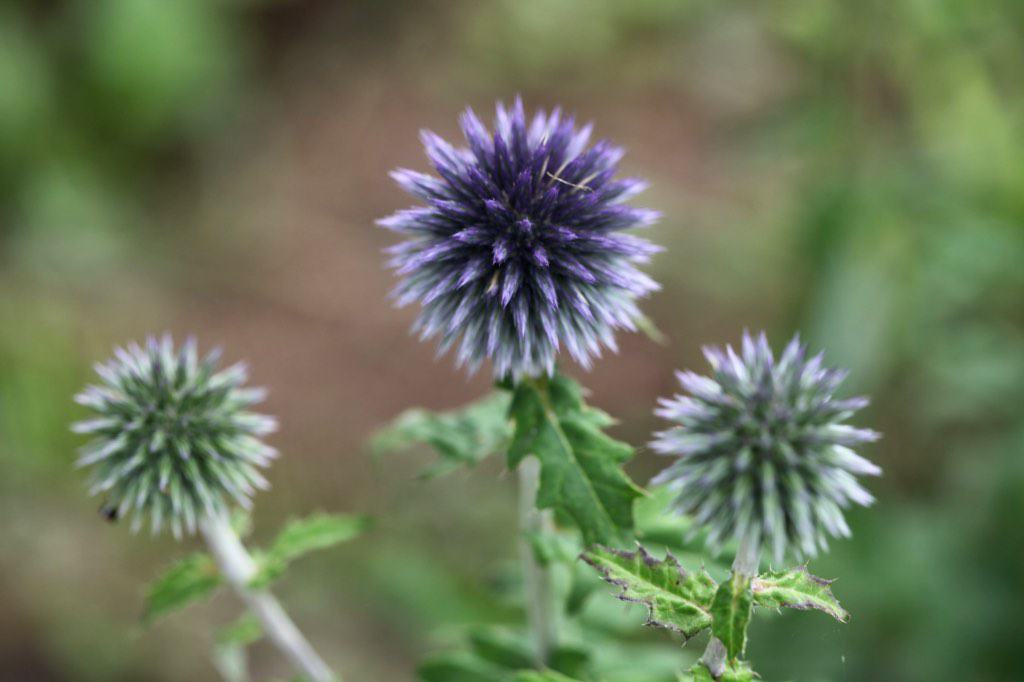
Understanding Globe Thistle
Globe thistle is a hardy perennial cherished for it's spiked blooms and effortless maintenance. This plant truly stands out in the garden for it's unique growth characteristics and visual appeal.
Scientifically known as Echinops, Globe thistle is a member of the Family Asteraceae. These plants belong to the same family as other garden favorites, such as daisies and sunflowers.
The Genus name Echinops comes from the Greek word "echinos", meaning hedgehog, referring to the plant's spiny flower heads.
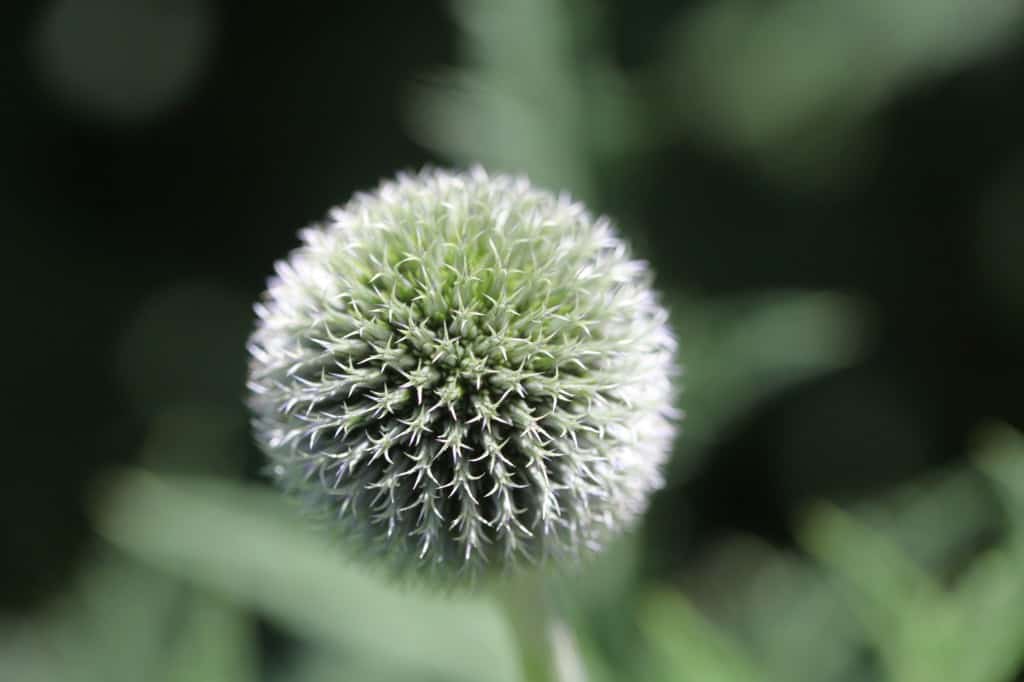
Growth Characteristics
Globe thistle is characterized by it's spiky steel-blue to violet flowers, and sometimes white, each in the shape of a round sphere, as well as thistle-like foliage.
Typically, Globe thistle reaches a height of 2 to 4 feet and spreads about 1 to 2 feet wide. Its vertical growth and spherical blooms add architectural interest to garden spaces.
The plant is known for it's long blooming season, typically starting in mid-summer, and extending into fall. The formation of the buds, blooms, and then seed heads leads to an extended enjoyment of color and texture throughout the growing season.


Why Choose Globe Thistle For Your Garden?
1. Low Maintenance: Globe thistle is ideal for gardeners seeking beauty without the high maintenance. Once established, it requires minimal care, making it perfect for busy individuals, or those who prefer a more hands-off approach to gardening.
2. Drought Resistance: This plant thrives in dry conditions, making it a smart choice for areas prone to drought or for gardeners looking to reduce water usage. It's resilience in dry conditions ensures it remains vibrant and healthy, even in challenging climates.
3. Attracts Pollinators: Globe thistle is a magnet for bees, butterflies, and other beneficial pollinators. By adding it to your garden, you support local wildlife and contribute to the health of your garden ecosystem, promoting pollination and biodiversity.
4. Visual Appeal: With its unique spherical blooms and striking blue or violet flowers, Globe thistle adds a distinct visual interest to any garden setting. It serves as an excellent focal point or complementary plant in garden designs.
5. Versatility In Garden Design: It's structural form and height make Globe thistle versatile in garden design. It can be used in borders, as a backdrop for lower-growing plants, or in wildflower and cottage gardens, offering flexibility in landscaping.
6. Disease And Pest Resilience: Globe thistle is not only tough against environmental conditions but also shows resilience against common garden pests and diseases. This reduces the need for chemical treatments, making it a safer choice for a more natural or organic garden.
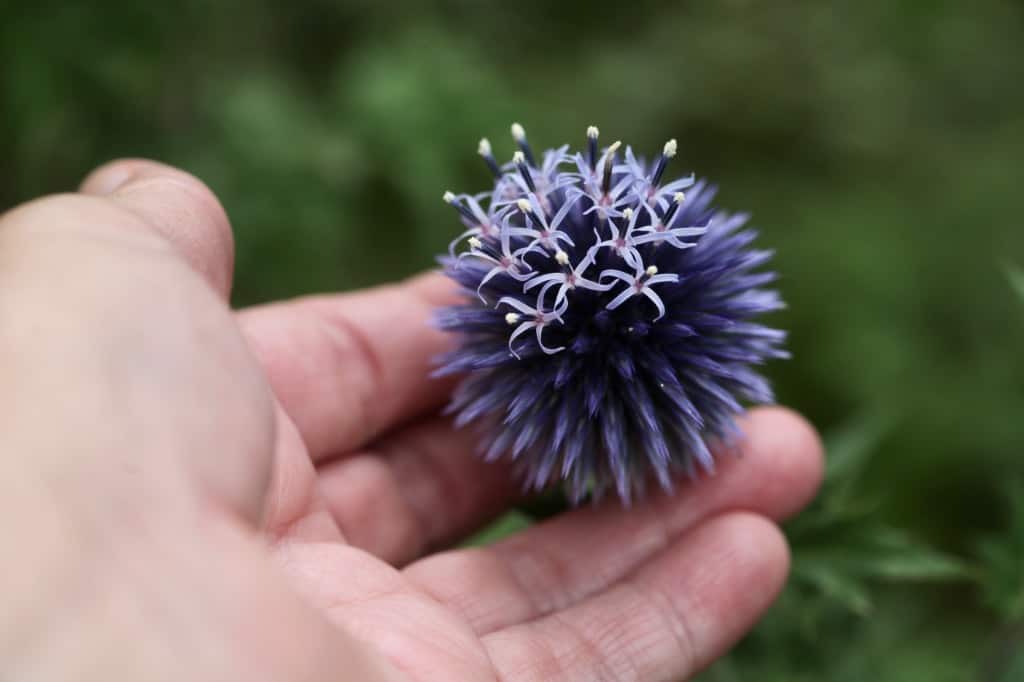
Popular Globe Thistle Varieties
Here are some notable Globe thistle varieties that gardeners might consider for adding visual interest and attracting pollinators to their gardens:
1. Echinops sphaerocephalus "Arctic Glow": This variety stands out with it's white to pale pink flowers, offering a unique color variation compared to the more common blue varieties.
2. Echinops bannaticus "Blue Glow": This variety is admired for its deep blue flowers and robust growth habit.
3. Echinops ritro "Platinum Blue": Known for its silvery-blue blooms and compact size, this small globe thistle, 'Platinum Blue' is a great choice for smaller gardens or for growing in containers.
4. Echinops ritro "Taplow Blue": Featuring deep blue, globe-shaped flowers, 'Taplow Blue' is a taller variety, reaching up to 4 feet in height.
5. Echinops ritro "Veitch's Blue": Renowned for its intense steel-blue flowers, 'Veitch's Blue' is a favorite among gardeners.
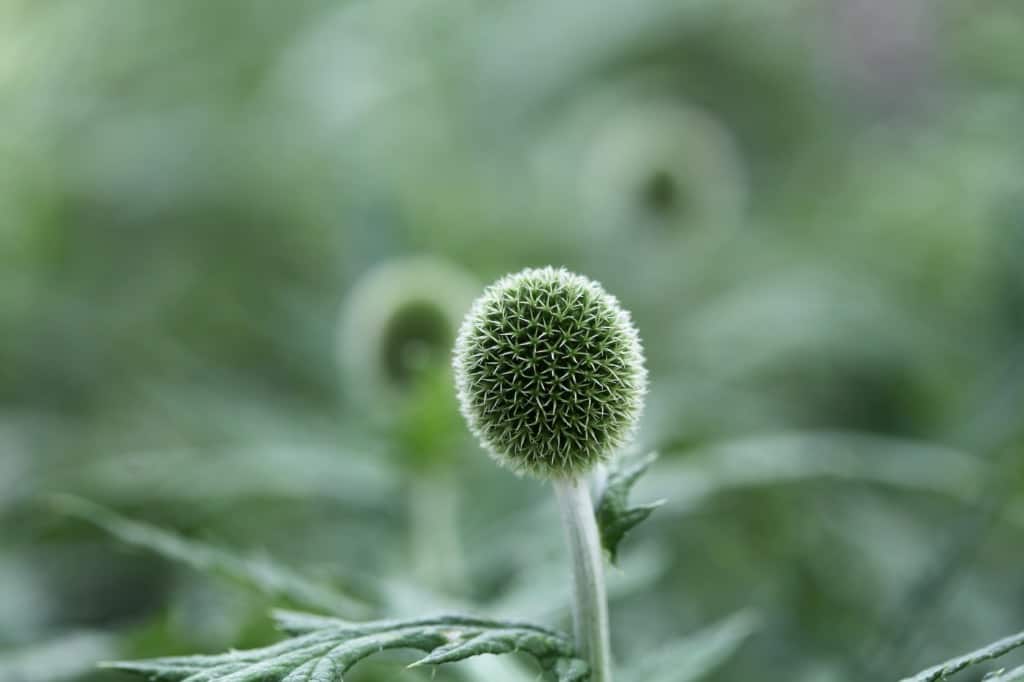
How To Grow Globe Thistle
Globe thistle (Echinops ritro) can be grown either from seed or by division. Each method has it's own set of steps and considerations, allowing gardeners to choose the approach that best suits their gardening style and the resources available to them.
Growing From Seed
Stratification
Globe thistle seeds will benefit from stratification, a process that mimics natural winter conditions to break dormancy and improve germination rates. Stratification involves exposing seeds to a period of cold, moist conditions before planting.
Although stratification is not strictly necessary, it can be helpful, especially in controlled growing environments such as when starting the seeds indoors under lights. These seeds do not experience the natural seasonal temperature fluctuations that encourage germination, unless they are artificially stratified before planting.
Learn more on the steps for stratifying seeds here.

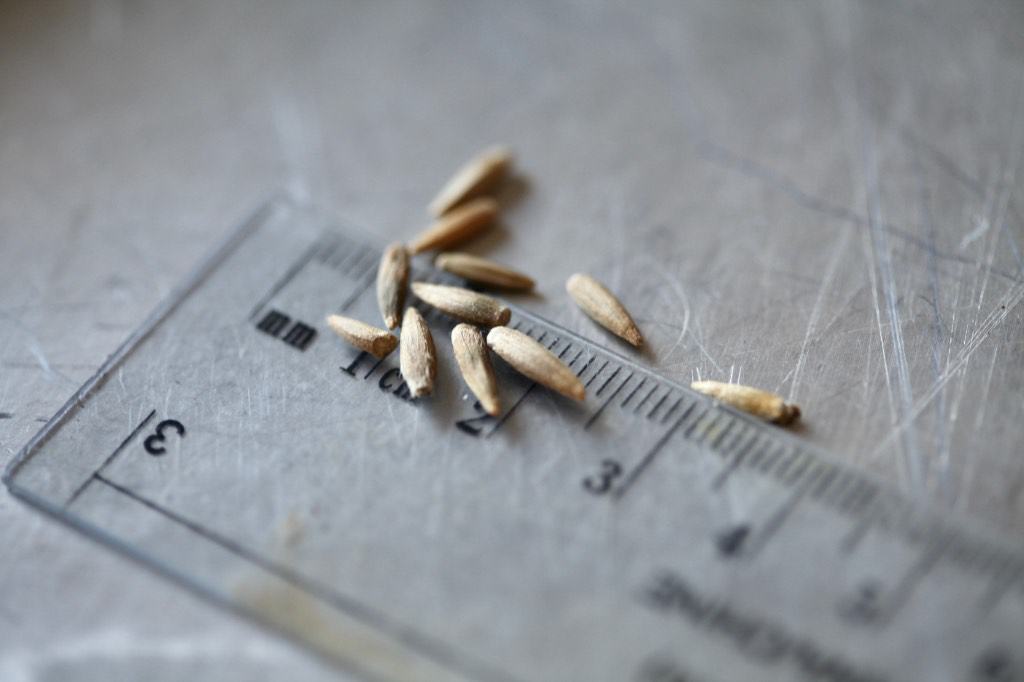
Starting The Seeds Indoors
- Consider stratifying your seeds in the fridge for several months before planting, to increase germination success.
- Sow Globe thistle seed indoors in late winter or early spring, about 6-8 weeks before the last expected frost.
- Sow seeds into cell trays or pots with good drainage, and into a good quality seed starting mix.
- Place the seeds on the soil surface and lightly press them into the soil. Do not cover them with soil, as they need light to germinate.
- Keep the soil moist but not waterlogged while awaiting germination.
- Seeds typically germinate in 2-3 weeks at room temperature. Ensure they receive plenty of light, either from a sunny window or a grow light, to encourage strong growth.
- Continue to provide light and moisture until the seedlings can be planted into the garden in spring, once the danger of frost has passed.
- Make sure to harden off the seedlings before planting out, to help prevent transplant shock.
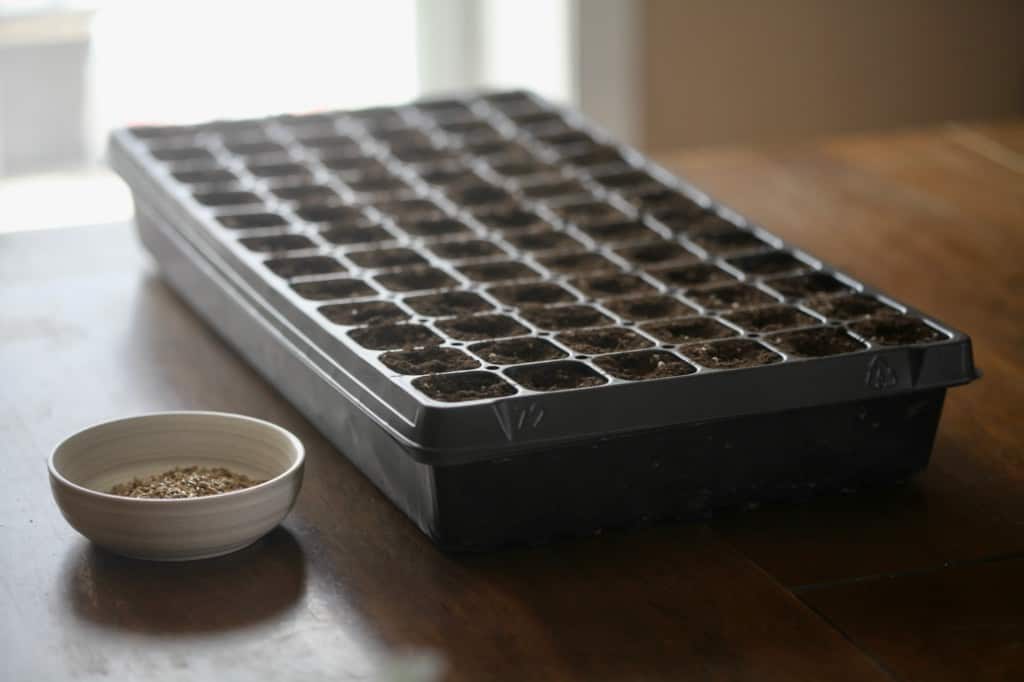
Direct Sowing
- For outdoor sowing, either sow into a prepared bed in fall, or wait until after the last frost in spring when the soil has warmed up.
- Place the seeds on the surface of the soil, as light aids germination, gently pressing them in.
Winter Sowing
- Winter sowing is also an excellent option. This method of sowing is similar to fall planting, except it involves planting into containers and placing them outside in winter.
- Winter sowing in milk jugs is one of the easiest ways to propagate these hardy plants from seed.
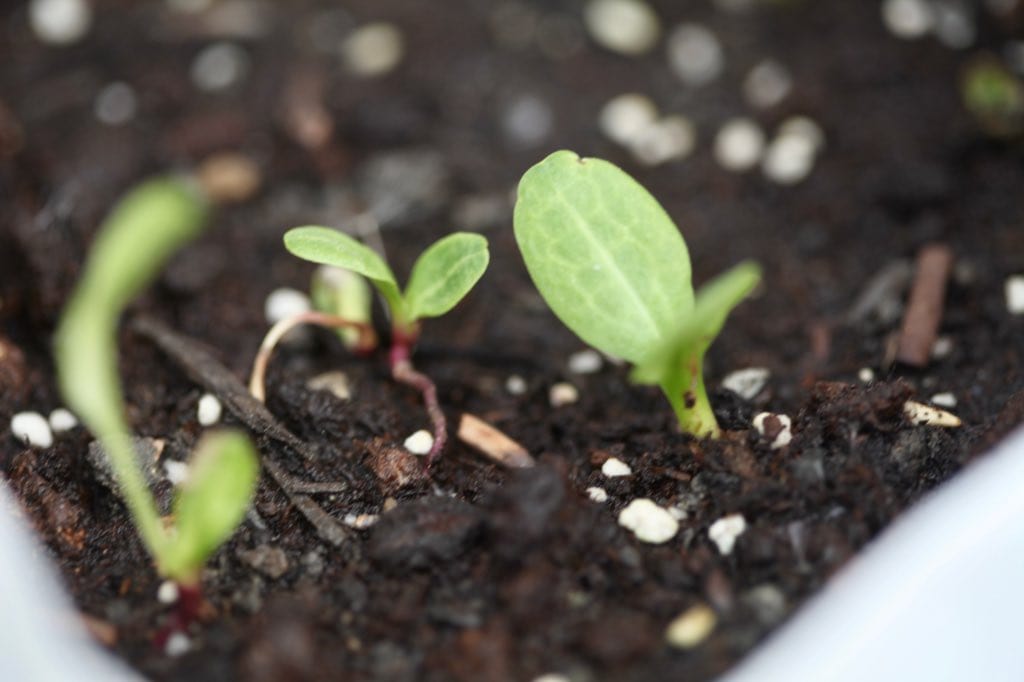
Growing From Division
- The best time to divide Globe thistle is in early spring or early fall when the plant is not in active bloom.
- Carefully dig around the base of an established Globe thistle plant, making sure to get as much of the root system as possible. Gently lift the entire plant out of the ground.
- Using a sharp knife or spade, divide the root ball into smaller sections. Each section should have several shoots and a portion of the root system.
- Immediately replant the divisions in their new locations. Choose a sunny spot with well-draining soil. Space the divisions according to the mature size of the plant, typically 18-24 inches apart.
- Water the newly planted divisions thoroughly to help establish them. Continue to provide water until the plants show signs of new growth, then reduce watering as Globe thistle is drought-resistant.
- Plants can be divided every three years.
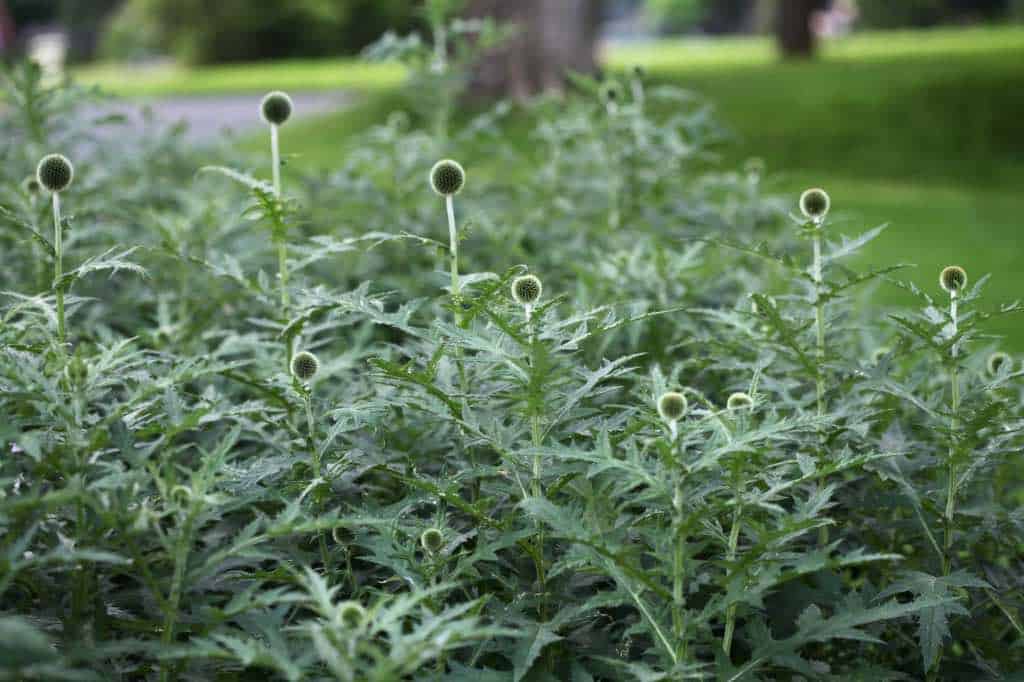
Globe Thistle Plant Care
Care for Globe thistle generally involves minimal intervention. Lets have a look at some of the growing conditions and maintenance and care which will keep your plants happy and healthy.
Growing Conditions
Growing Zone
- Globe thistle thrives in USDA plant hardiness zones 3-9, showcasing its adaptability to a wide range of climates. This wide hardiness range makes it a versatile choice for many gardeners.
Light Requirements
- It's important to provide Globe thistle with ample sunshine, as the plant thrives in a full sun location. Provide at least 6 hours a day of direct sunlight for best flowering.

Soil Requirements
- While adaptable to various soil types, Globe thistle performs best in well-drained soil. It's tolerant of poor soil conditions, including rocky or sandy soils, making it suitable for challenging garden spots, like gravel gardens and rock gardens.
Moisture Requirements
- Water in thoroughly after planting, and maintain some moisture while establishing in the garden
- Once established, Globe thistle is drought-resistant, requiring minimal watering. This characteristic makes it an excellent plant for sustainable gardens, and for gardeners seeking to reduce their water usage.
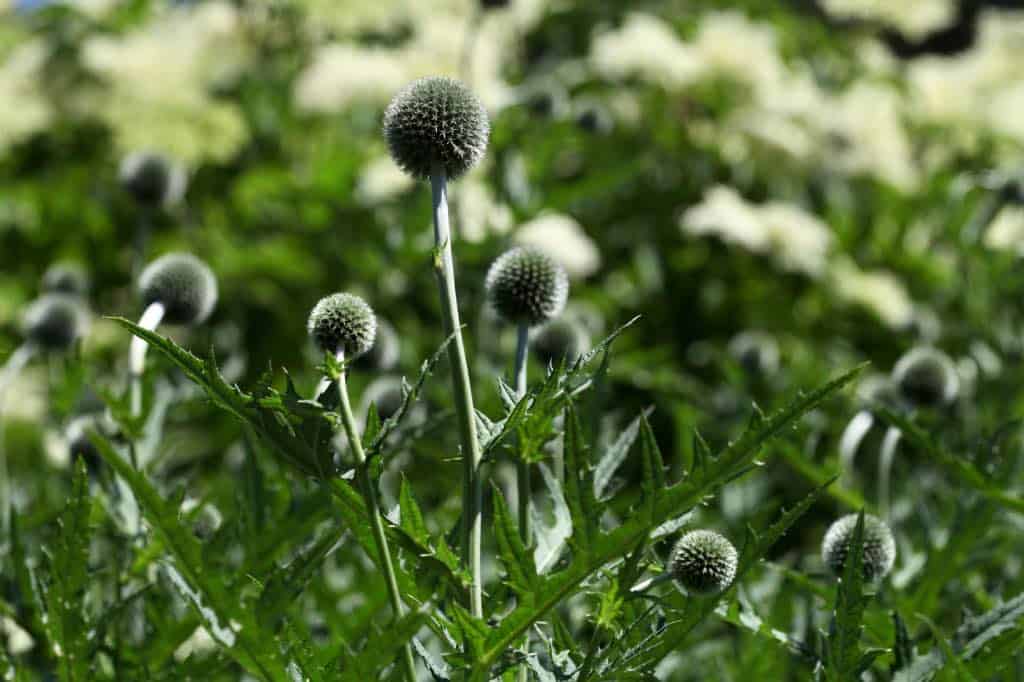
Maintenance And Care
Globe thistle is valued for its low maintenance needs, but certain practices can help maintain its health and improve its appearance. Here’s how to care for your plants, focusing on deadheading, pruning, and managing pests and diseases.
Deadheading Spent Flowers
- Deadheading, or removing spent flowers, is a simple task that can extend the blooming period and prevent the plant from self-seeding excessively, which might lead to overcrowding.
- Once the blooms have faded and lost their vibrant color, it's time to deadhead.
- Use clean, sharp scissors or pruning shears to cut the spent flower stems back to the base of the plant or to a set of new leaves. This encourages the plant to produce more blooms.
- Deadheading not only keeps your Globe thistle looking tidy but can also encourage a second bloom in late summer or early fall.
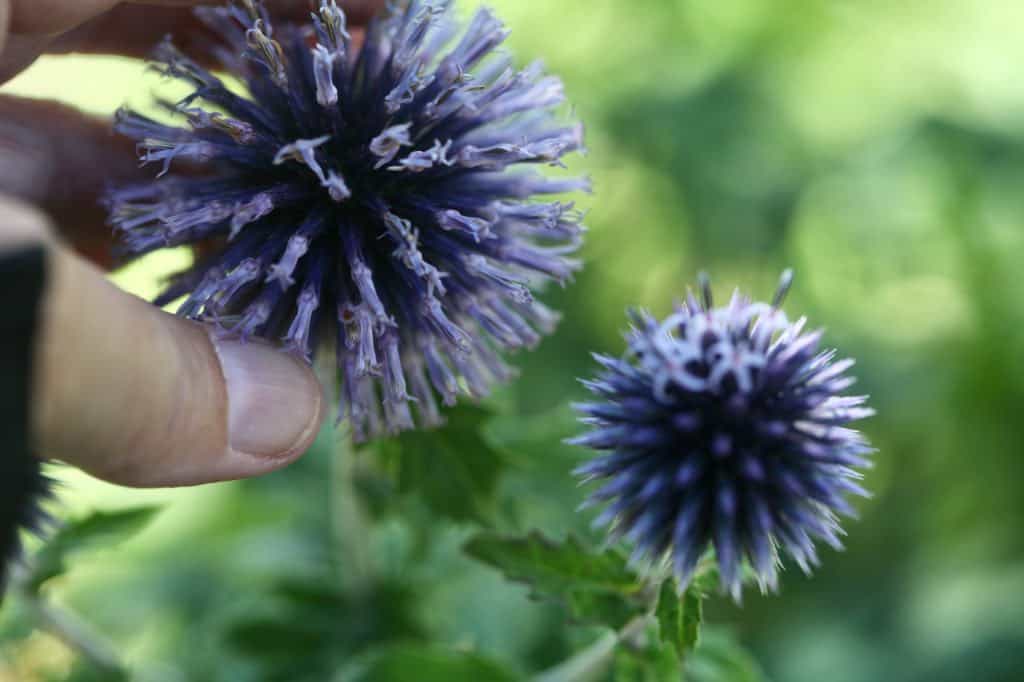
Fertilizing
- Globe thistle does not require frequent fertilization. An application of a balanced, slow-release fertilizer in early spring is generally sufficient.
- Before fertilizing, it's a good idea to test your soil to understand its nutrient content and pH level. Globe thistle prefers well-drained soil with a neutral to slightly alkaline pH. Adjusting your soil based on a test can sometimes be more beneficial than applying fertilizer.
- If you decide to fertilize, do so in early spring as new growth begins. This gives the plant a boost as it enters it's active growing season.
- A formula with an equal balance of nitrogen, phosphorus, and potassium (such as a 10-10-10 NPK ratio) is suitable.
- Be careful of over-fertilizing, as this can lead to excessive foliage growth at the expense of blooms, and can also increase the risk of disease.
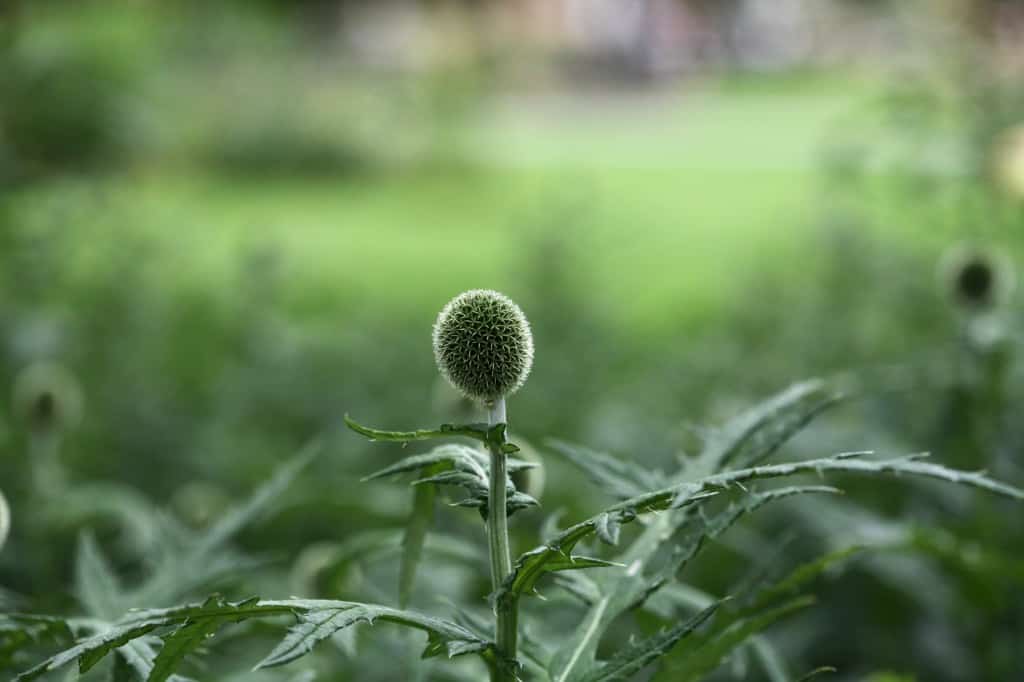
Pruning And Trimming
- Pruning Globe thistle helps to maintain it's shape and size, ensuring it doesn’t overshadow nearby plants. It also promotes healthy growth and airflow around the plant.
- The best time to prune these herbaceous perennials is in early spring as new growth appears. You can also do light pruning after flowering if the plant looks untidy.
- Cut back the previous year's stems to ground level in spring to make way for new growth. If the plant is too dense, thin out some stems to improve air circulation.
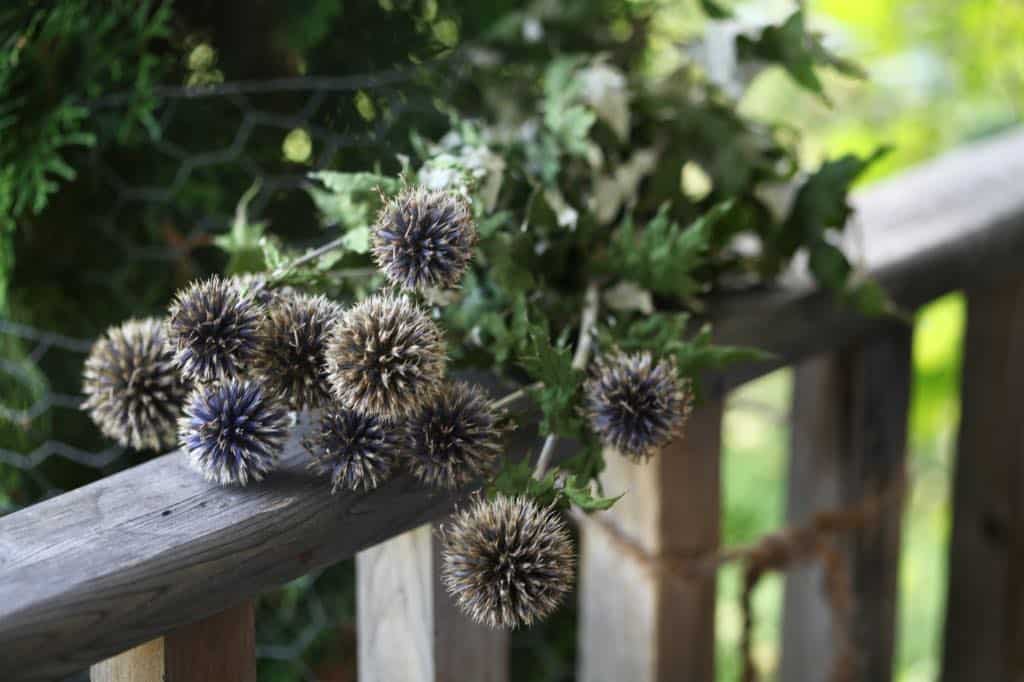
Pests And Diseases
- Globe thistle is relatively resistant to pests and diseases, but like any garden plant, it can occasionally face issues.
- Aphids and spider mites can be attracted to Globe thistle. These can usually be managed with a strong jet of water to dislodge the pests, or by using insecticidal soap as a more environmentally friendly option.
- Root rot can occur in poorly draining soils. Ensure the plant is planted in well-drained soil to prevent this.
- Powdery mildew might also appear, especially in crowded conditions or in areas with poor air circulation. Pruning to improve airflow and avoiding overhead watering can help prevent fungal diseases.
- Regular monitoring and early intervention are key. Remove any affected parts of the plant to prevent the spread of diseases and dispose of them properly.

Frequently Asked Questions
How Long Does It Take Globe Thistle To Bloom From Seed?
As with most perennials, Globe thistle typically blooms in its second growing season when grown from seed. Planting seeds indoors early and transplanting them, can help you achieve blooms a bit sooner.
Is Globe Thistle A Good Cut Flower?
Globe thistle flowers make wonderful cut flowers, adding an interesting element to flower arrangements and bouquets. The blooms can be used in both fresh and dried forms.
When harvesting the flowers for drying, make sure to cut the stems just before the flowers open, for best drying results.
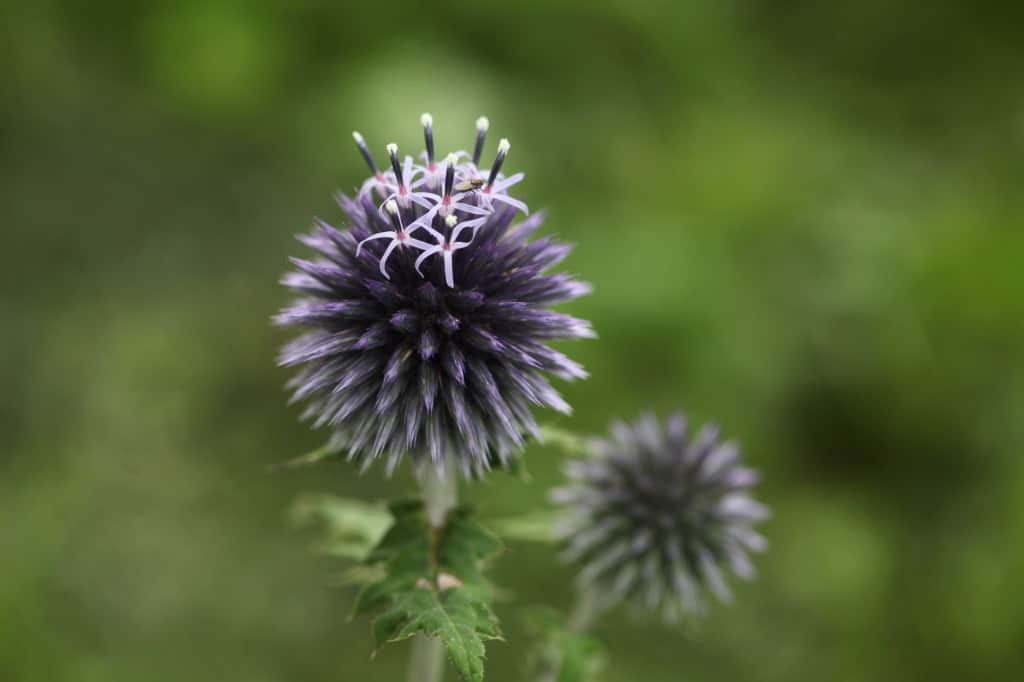
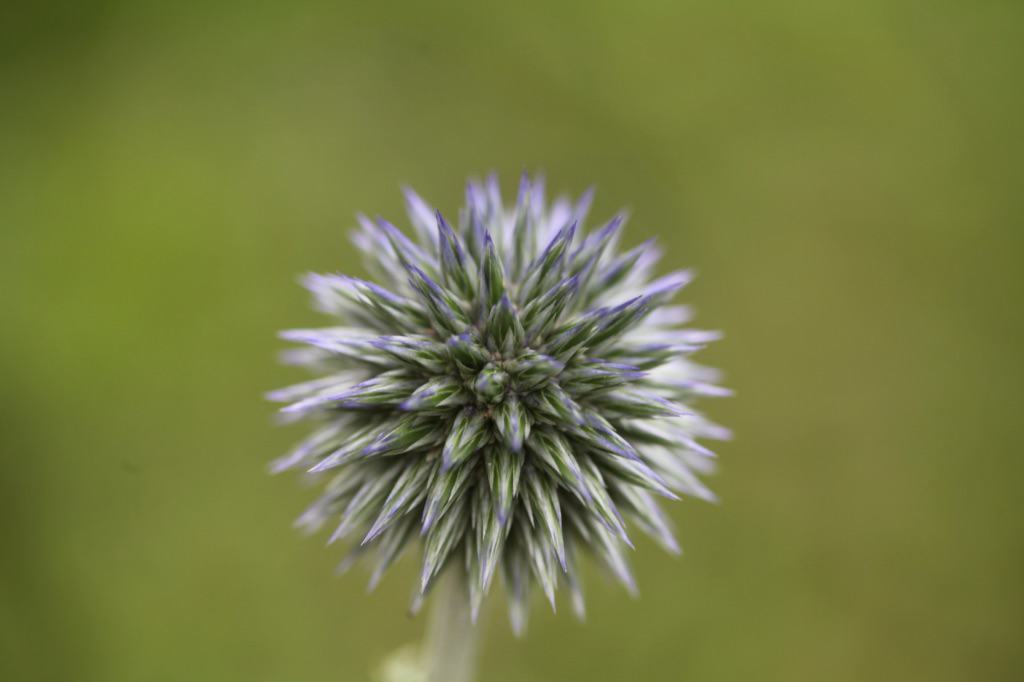
Which Companion Plants Are Best Suited For Growing Alongside Globe Thistle?
Companion planting can enhance the growth and health of Globe thistle. These flowering plants can coexist well with other drought-resistant plants which require full sun exposure.
Globe thistle pairs well with other drought-tolerant plants such as lavender, sedum, Russian sage, purple coneflower, or ornamental grasses. Its blue blooms also contrast beautifully with yellow flowers like Black-eyed Susan or coreopsis.
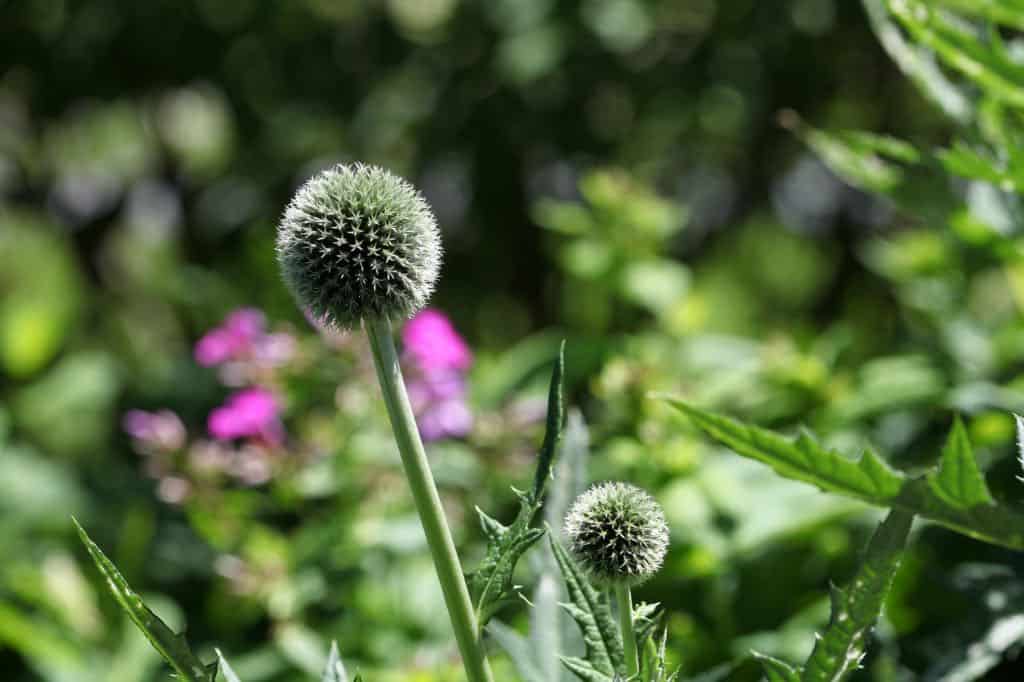
Is Globe Thistle Invasive?
While these plants can easily self-seed, they are not generally considered invasive. However, deadheading spent flowers can help control their spread in your garden.
How Do I Prepare Globe Thistle For Winter?
In most climates, Globe thistle will die back to the ground in winter, and then produce new growth in spring.
After the first frost, you can cut the plant back to a few inches above ground level. Alternatively you can just allow the plant to die back naturally on it's own, and do cleanup and trimming in spring.
Can I Grow Globe Thistle In Containers?
Yes, Globe thistle can be grown in containers as long as the pot provides ample space for it's roots and has good drainage. Ensure it receives enough sunlight and water according to container gardening needs.
In colder growing zones provide winter protection for the containers, so that the plants will survive the cold winter temperatures and freezing. Place the container in a cool garage over winter, and bring it back out in spring when the weather warms.
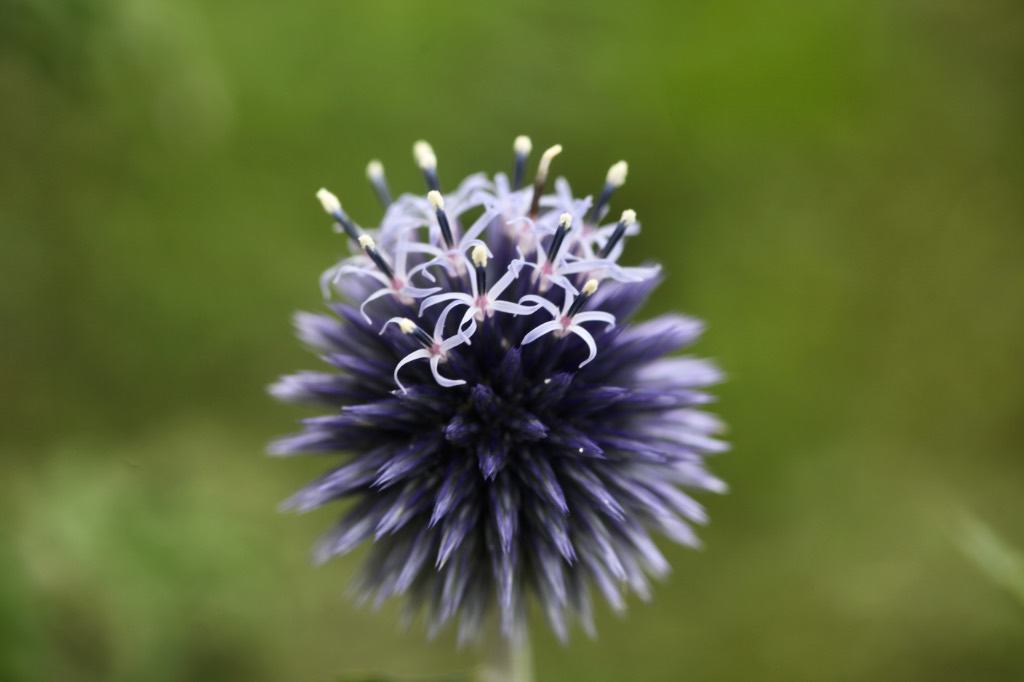
Are Globe Thistle Plants Deer-Resistant?
Yes, Globe thistle is considered deer-resistant. Its spiky texture and foliage make it an unattractive choice for deer, making it a great addition to gardens in deer-prone areas.

Summary
Globe thistle is a great choice for gardeners seeking to add a touch of resilience and beauty to their perennial garden and outdoor spaces.
The stunning blue, white, or violet blooms that not only capture the eye, but also play a crucial role in supporting our local pollinators.
The plant's low maintenance and drought-resistant nature make it an ideal candidate for both seasoned gardeners and those just beginning their gardening journey. This hardiness is a significant reason for it's popularity among gardeners seeking dependable perennials.
Globe thistle, with its unique charm and straightforward care, is a testament to the joys of gardening, offering both a visual feast and a sanctuary for wildlife. Consider growing this wonderful plant in your garden next season, and for many seasons to come.
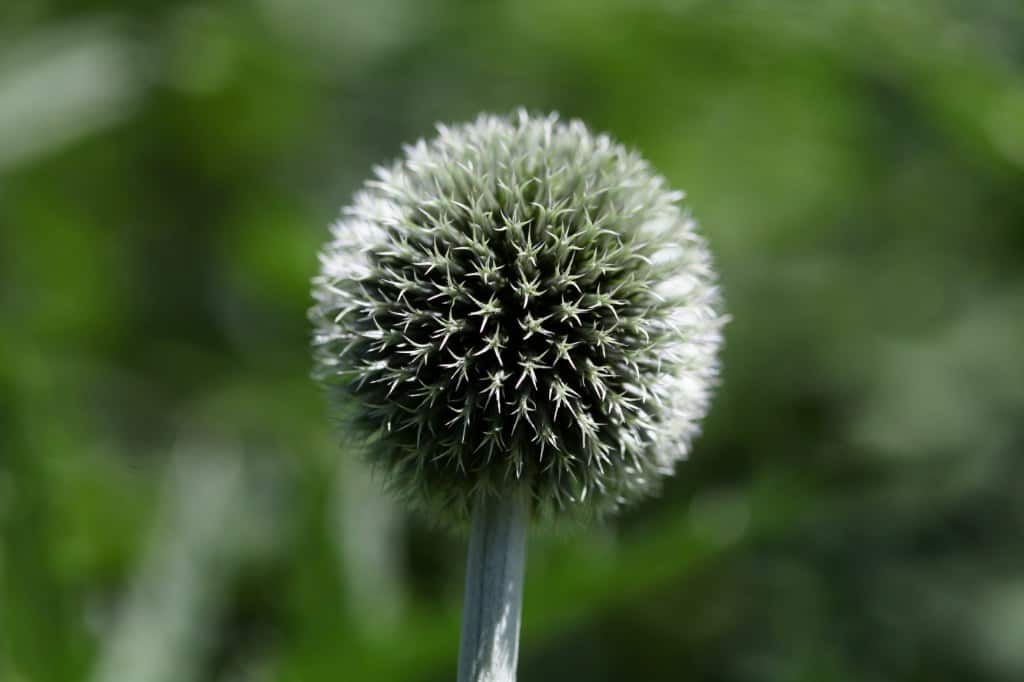
Do you grow Globe thistle in your garden? Be sure to leave a comment below to share your experience!
Other Posts You May Like:
Pin It For Later!
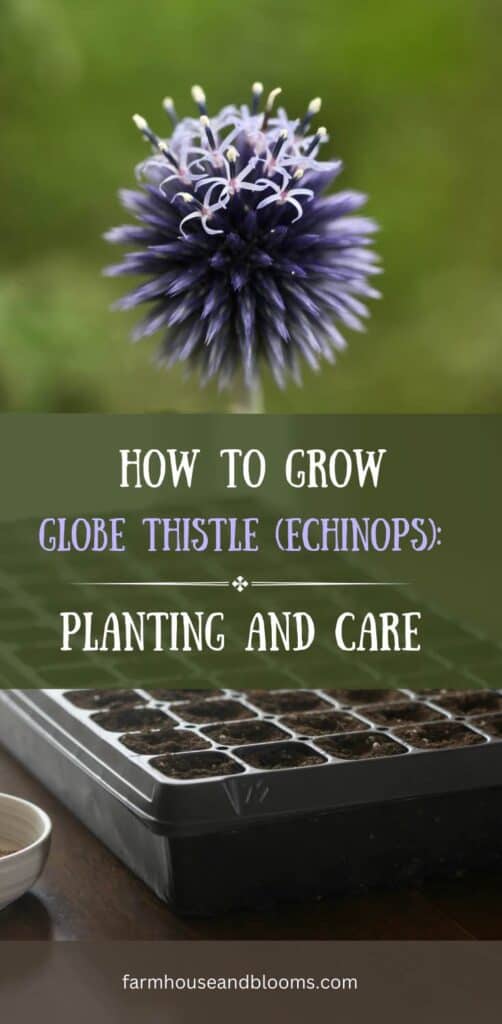
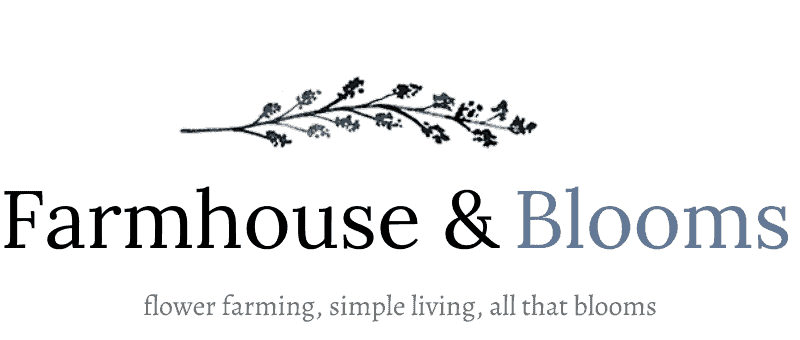





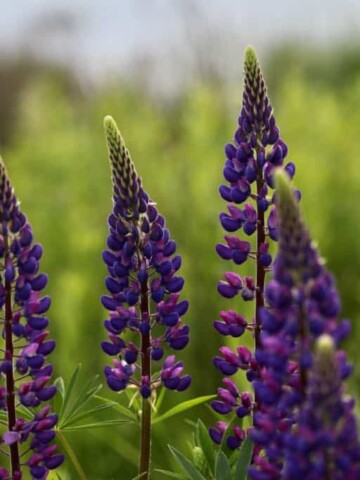
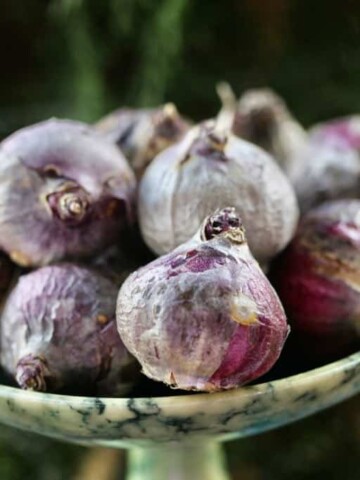
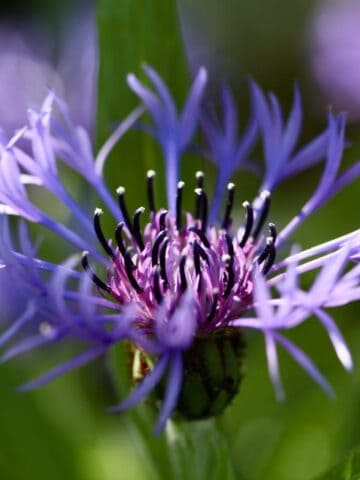
Leave a Reply